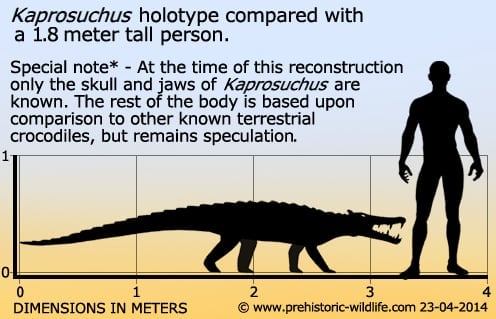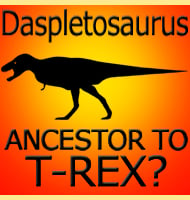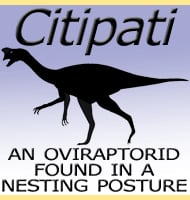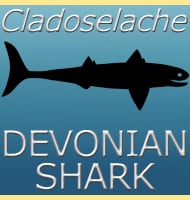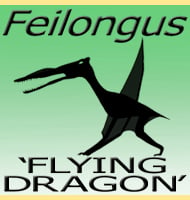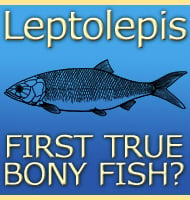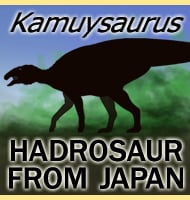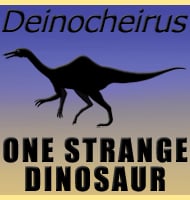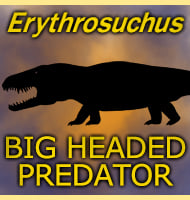In Depth
After the release of its description, Kaprosuchus, or ‘Boar Croc’ as it is more often called, quickly captured the public’s imagination and entered popular culture soon after. The name comes from the three sets of teeth that look like the tusks on a wild boar. These pairs of teeth are divided two pairs to the top jaw, one pair to the lower. The jaws also have notches in the bone to allow the teeth to pass through. Without these notches, Kaprosuchus would have had its jaws permanently held open by its own teeth.
The tip of the snout is quite bulky and may have had a keratinous growth. Speculation for this feature has been for a potential battering ram, where Kaprosuchus would charge at its prey, stunning or knocking it down before clamping down with its jaws and teeth. The eye sockets are in a similar arrangement to other terrestrial crocodiles in that they are angled forward as opposed to upward. There is also enough of an angle to indicate the possibility that Kaprosuchus had stereoscopic vision, giving it a degree of depth perception.
Further Reading
– Cretaceous crocodyliforms from the Sahara. – ZooKeys 28 (2009): 1–143. – Paul C. Sereno & Hans C. E. Larrson – 2009.
